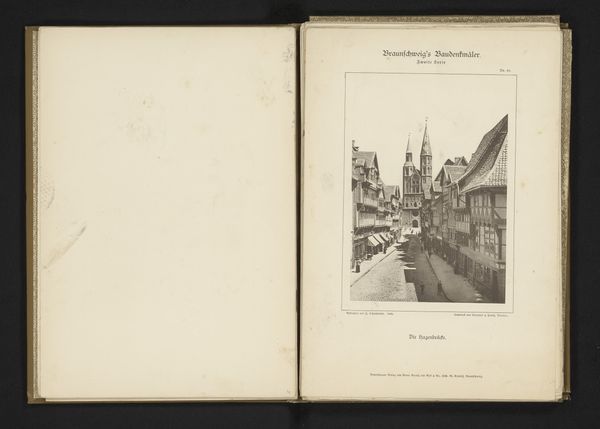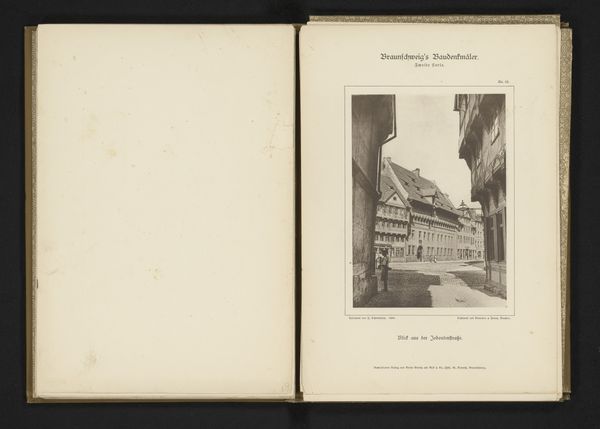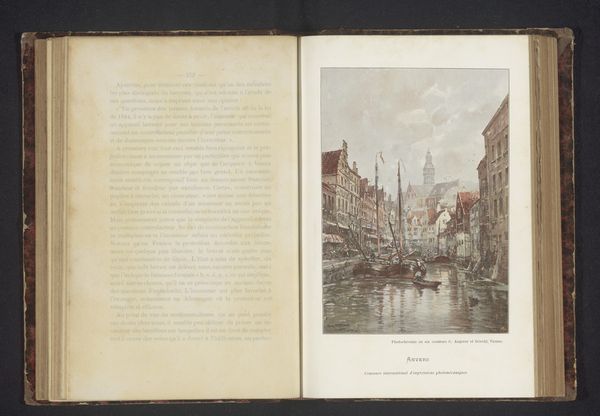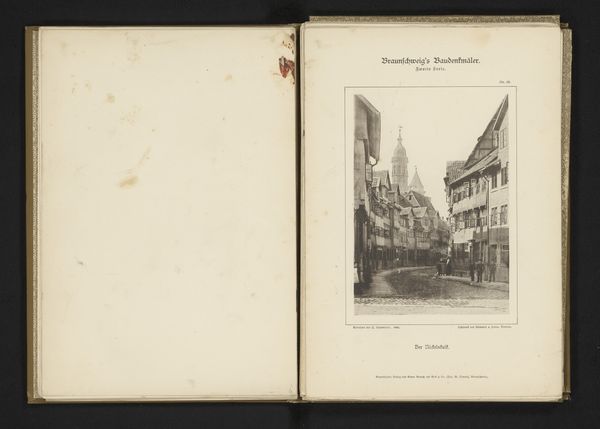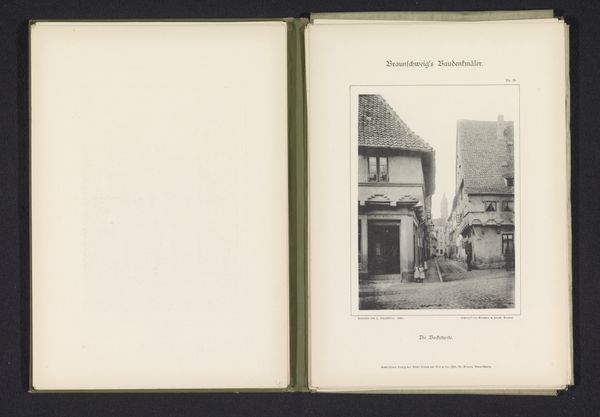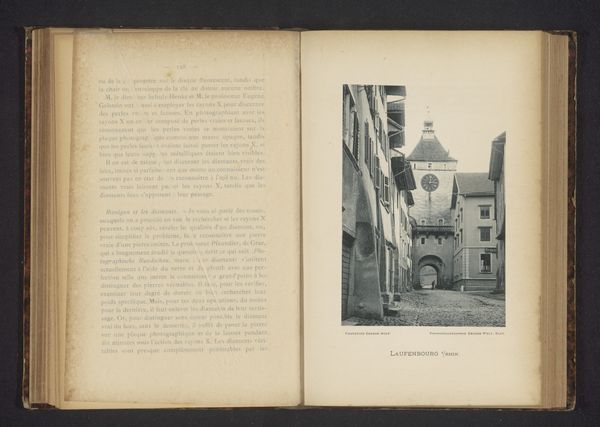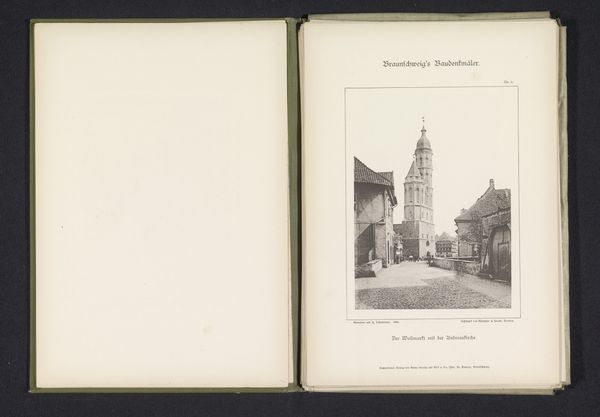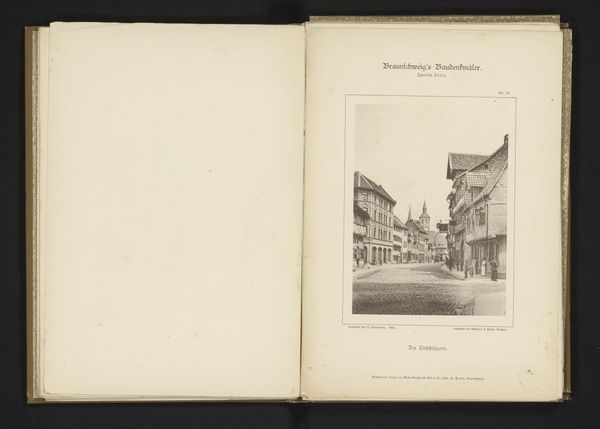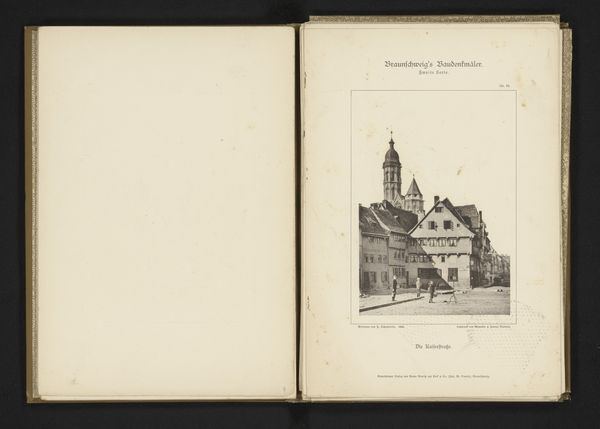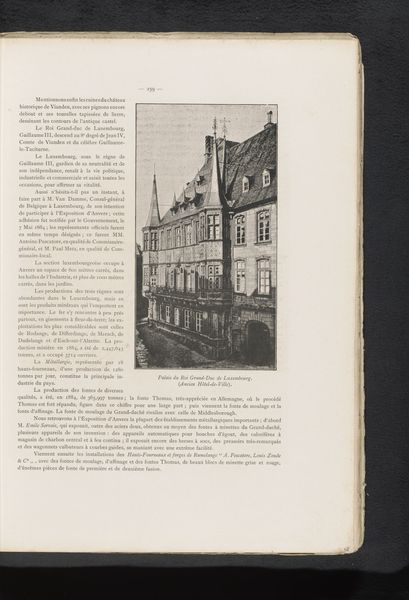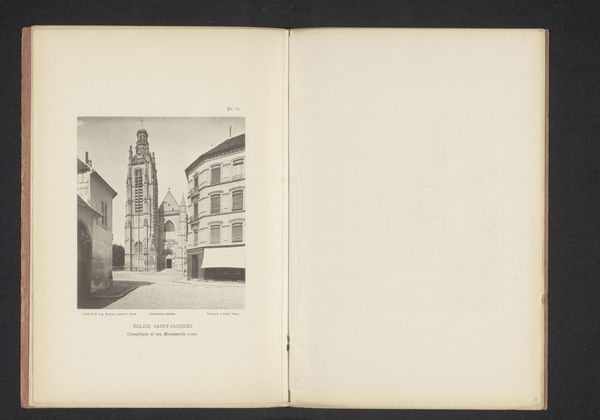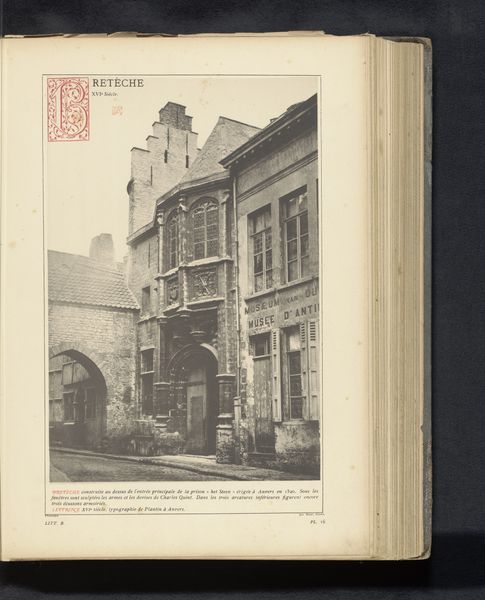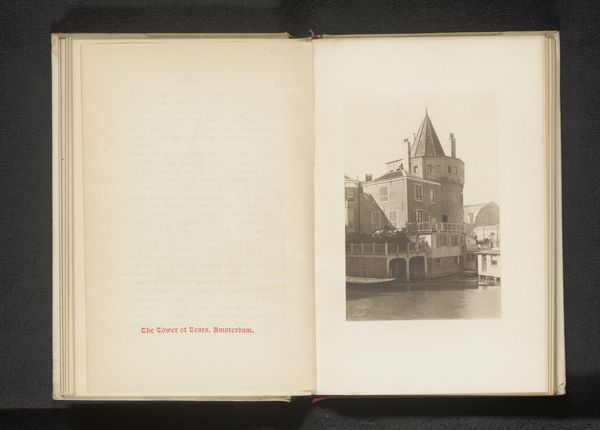
Dimensions: height 160 mm, width 116 mm
Copyright: Rijks Museum: Open Domain
Curator: The photograph before us, "Gezicht op een gracht in Diksmuide," by Hippolitus Carolus Ignatius Vermeesch, offers us a peek into a past world. It is, as far as we can ascertain, from before 1878. Vermeesch employed the gelatin-silver process. What strikes you immediately about it? Editor: There's a quietude that settles in immediately; the water's stillness, reflecting the aged buildings... It's muted but powerful. I find it striking how much detail is conveyed despite the limitations of the process. Curator: Absolutely. I think Vermeesch is situating himself within broader landscape traditions but also complicating it with the rise of the city, using photography. Notice the specific viewpoints. The buildings themselves seem born of the material reality of the earth, stone layered upon stone. The image invokes reflections on the economic life and its relation to photographic practices. Editor: The way light falls on the brickwork, it suggests that it was likely difficult to move such heavy material. One gets a feel for the labor required to make the physical spaces we inhabit, which of course photography both documented and helped reshape. It also presents the aesthetic of urban growth in counterpoint to existing natural landscapes. I am struck with how water becomes almost a central raw element: not just reflecting life around it, but seemingly also facilitating it. Curator: It is this tension between labor and industry, or landscape and material production, which informs our current moment. When viewed from the vantage of the present we may look at it from feminist geography asking, who were the city spaces for? How did material constraints then affect social and gender realities for ordinary folk in everyday life? And of course photography played its part to inform power hierarchies. Editor: Photography then acted almost as a promotional material itself, framing how others should interpret industry and labour across all echelons, wouldn’t you agree? Curator: Most definitely. Editor: Reflecting upon "Gezicht op een gracht in Diksmuide," my thoughts drift back to those who actually worked the materials captured in frame. The image also evokes our connection to how history continues to physically form our cities and who shapes them. Curator: Yes, it leaves me pondering on labor practices across intersections of identity which we can carry forward as valuable lesson as a point for societal reformation to build more equitable realities.
Comments
No comments
Be the first to comment and join the conversation on the ultimate creative platform.
